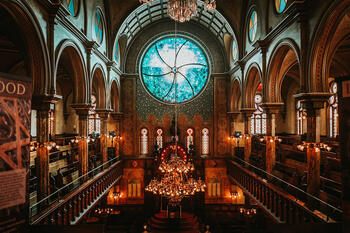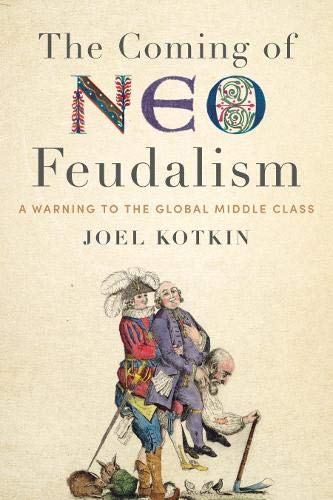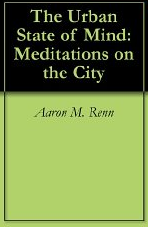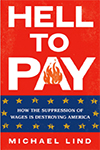
For generations, the Harmonie Club has served as a haven for New York’s Jewish elites. Founded in 1852, the club has since 1905 occupied an elegant eight-story building at 4 East 60th Street, a townhouse with lovely painted ceilings and a handsome Victorian facade designed by Stanford White. The names of its most illustrious members — the Bloomingdales, the Guggenheims, Alfred Ochs, founder of the New York Times Company — are intimately connected with the history and character of New York. Whatever persecution Jewish people faced elsewhere in the world, here was a place they could thrive.
Just recently, however, its members have been feeling considerably less secure. Zohran Mamdani — a socialist, a Muslim and a fierce critic of Israel — is the city’s likely next mayor. His emergence is eliciting palpable concern among the club’s members. “We are being erased in our own city,” says Sam Abrams, club member and prominent political scientist. At the Harmonie, as in various less illustrious Jewish institutions, the talk is of rising antisemitism and anti-Zionism, and an increased feeling that the city is turning against its Jewish communities. Elliot Cosgrove, rabbi at the generally liberal Park Avenue synagogue on the Upper East Side, sees Mamdani as a lethal threat. “If there’s a celebration of Israel and 10,000 people show up, will they be safe under Mamdani?”
New York’s Jews have suffered periods of exclusion, as they have elsewhere. Indeed, that’s one reason why the Harmonie was founded in the first place: Jews were largely unwelcome at the immaculately WASPish Union Club. But never before has New York had a mayor who is so apparently anti-Zionist; who has accused Israel of “genocide” and “apartheid”; who has defended the phrase “Globalise the Intifada”; and who has appeared to celebrate terrorists and their supporters. All this in a city that, for most of the 20th century, hosted the largest Jewish community in world history.
Not that New York has always been welcoming to Jews. The first to arrive came in 1654, fleeing the Spanish Inquisition. They were a cause of consternation for Dutch colonial administrator of the time, Peter Stuyvesant, but the refugees had enough connections in Holland to force him into allowing them to stay. The first synagogue rose in 1682. The American Revolution brought full citizenship, while through the 19th century, New York welcomed thousands of largely German-speaking Jews: it’s no accident that the Harmonie was originally called Gesellschaft Harmonie. By the American Civil War, the city was home to 150,000 Jews, yet the largest influx came around 1900, when over two million Jewish migrants, including my own grandparents, arrived from Eastern Europe.
Having travelled the filth and stench of steerage class, these immigrants did much to shape the 20th-century city. It is frankly hard to imagine a successful, prosperous New York without Jews — just as it is hard to imagine New York culture without Philip Roth, Norman Mailer and Saul Bellow; George Gershwin and Leonard Bernstein; Barbra Streisand and Stephen Sondheim; Stan Lee and Diane Arbus; Woody Allen and Mel Brooks; the Beastie Boys and Lou Reed; Fran Leibovitz and Lena Dunham. Jews are critical players in the philanthropic structures of the city, from the Metropolitan Opera to the Philharmonic to the New York Historical Society near Central Park. They have been prominent among the big donors to the city’s great universities, notably NYU and Columbia.
It was New York’s Jews who, for better or worse, founded Goldman Sachs and the Lehman Brothers, and the modern mafia too. “In New York,” suggests Yeshiva University historian Jeffrey Gurock, “you could feel like the whole world was Jewish.” Even on the streets, the Jewish heritage persists: besides selling falafel and kebabs, the ubiquitous halal vendors also hawk knishes and kosher hot dogs. The essayist Milton Klonsky was only half joking when he called the Big Apple the “Ghetto of Eden”.
But New York’s Jewish character has been waning for decades. In 1950, the city was home to 40% of America’s Jews. Now, it represents well less than 15%. When I was growing up in the late Fifties, New York had some two million Jewish inhabitants; today the population is slightly less than half that. Much of that population headed to the suburbs through the Sixties and Seventies, an era of marked urban decline in New York as elsewhere.
Read the rest of this piece at: UnHerd.
Joel Kotkin is the author of The Coming of Neo-Feudalism: A Warning to the Global Middle Class. He is the Roger Hobbs Presidential Fellow in Urban Futures at Chapman University and and directs the Center for Demographics and Policy there. He is Senior Research Fellow at the Civitas Institute at the University of Texas in Austin. Learn more at joelkotkin.com and follow him on Twitter @joelkotkin.
Photo credit: Jörg Schubert via Flickr under CC 2.0 License.












